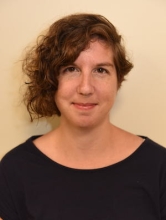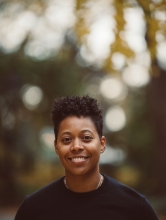By Jules Csillag and Lindsey Foster
Words have power. We're going to use the word "disabled" instead of "students with disabilities" for a few reasons. We want to show that people, places, and systems (like schools) exclude disabled students. They disable them by being ableist. Ableism is the discrimination of people based on disability
Dr. Subini Annamma (she/her) writes that being disabled is fluid and social. This means that people aren't disabled in every situation. We also use "disabled" because people should be able to call themselves what feels good to them. Disabled people aren't all the same, but we learned from Disability Justice advocates (people who fight for freedom for disabled people). They mostly used the word "disabled." It's also used in the #BlackDisabledLivesMatter hashtag, which was started by Keri Gray (she/her) and Justice Shorter (she/her).
We will write about disability justice in this series. Disability justice wants freedom for all disabled people. Patty Berne (she/they) points out that disability rights can sometimes be given and taken away. Disability justice knows that all people are whole and worthy and deserve communities. Disability justice also says that ableism and racism work together, and so we must fight them together.
In our schools, we have examples of how ableism and racism go together. One example is the school-prison Nexus. This is a term that highlights the overlap between schools and prisons, but we won't focus on that in this series. Instead, we will write about how COVID-19 further showed how schools aren't equitable. This means that not everyone gets what they need in the same way. We will share ideas about what the last year and a half has taught us about what schools could look like. These ideas are based on what we learned from Disability Justice advocates (people who fight for freedom for disabled people). We will focus on what educators can do on their own by listing specific ideas for their classrooms.
Last year, because of COVID-19, many schools started doing remote schooling (where students go to school online) or a mix of online and in-school learning. These changes affected everyone, but disabled students of color were affected more, and more negatively. Many services and supports that students have the right to receive were not available online. This included things like one-on-one time with teachers, different places and ways to learn, and more than one teacher in a classroom. According to one survey, only 1 out of every 5 parents of disabled students said the student was receiving all of the services they have a right to.
Also, not everyone had the right kind of technological device like a laptop or tablet. Also not everyone had internet that allowed them to learn. This was particularly true for low-income students and students of color. Some large school districts ran out of devices or did not organize for students to be able to pick up the devices in a fair way. This meant some students had to share devices with their siblings.
The difficulties of doing remote learning affected Black students more than other students, especially those who learn differently. Isaiah Elliott, a 12-year-old boy with ADHD, was suspended from remote school after his teacher said he was playing with a toy gun. Isaiah's school called the police to his home. This put Isaiah in danger, and could have resulted in his murder, which is what happened to Tamir Rice.
It's clear that remote schooling didn't work for all students, and especially not those students who have been left out and discriminated against for years and years. This includes people of color, queer and/or trans people, disabled people, those who speak other languages, and so on...and especially those who have more than one of these identities.
Switching to remote school was not only hard for students and families, but educators and administrators also struggled. Many teachers were not prepared or trained to teach online. This meant that teachers felt like they were not supported, and like they were overworked.
In parts 2 and 3 of this blog series, we'll share themes from remote schools, from those fighting for justice, and from the COVID-19 pandemic. We will focus on education and disability. Our ideas are partly based on what we saw as not working during this time. We also wanted to "freedom dream" (to think creatively about what schools could look like) where everyone was supported, cared for, and free.
Part 2 will look at how schools could be spaces for freedom, fighting back, and joy. It looks at what real togetherness between teachers and students could look like, and how educators can celebrate students and make classroom decisions together.
Part 3 will look at how schools can think about the word "access" (how people move, learn, etc). In that post, we also invite educators to provide students with choices, to respect their differences, and to show how we all rely on each other.



